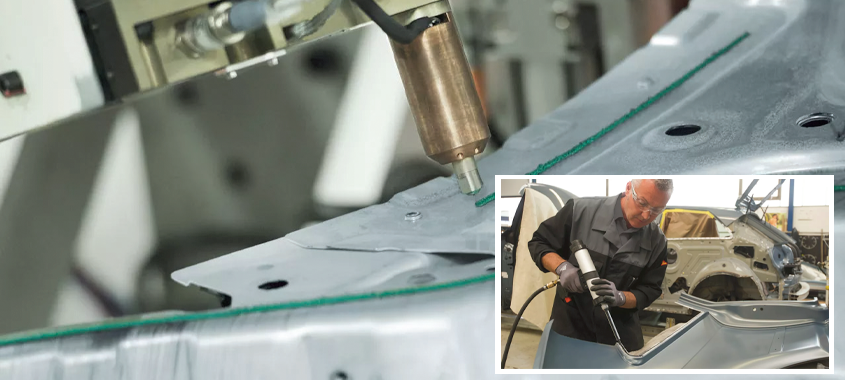A BALANCED DIET
ADHESIVES DON’T HAVE TO BE THE WRONG MOVE
What’s one word that can describe a healthy diet? There are many but consider this important one: balance. Want to eat well? Then you must get your greens in, your fruit, your fibre, protein. If you’re sick you eat more vitamin C, if you’re thirsty you chug a big glass of water.
Vehicles, much like a body, need a whole range of repairs to ensure it functions smoothly. And, despite their not-so-positive reputation—that includes adhesives. Yes, they must be used wisely, or you might find yourself treading through muddy water. But when used wisely, adhesives can be an excellent tool. Nobody likes dropping tons of money on repairing their car, and most autobody repair clients will seek out the best deal. So, if a repair business can bring vehicles back to pre-accident conditions for less money than its competitors, and without compromising anyone’s safety, it will thrive.
To do this, businesses must take advantage of a broad spectrum of procedures— including structural adhesives.
Don’t scoff so fast; times have changed. Some modern structural adhesives are capable of bonding together different materials at the molecular level. The inclusion of high-tech superalloys also means that—when the heat of a weld could disrupt the structural integrity of a piece of equipment—adhesives are the simply only option for bonding.
In 2020, General Motors used epoxy- based structural adhesives in the Cadillac CT6, allowing it to make use of different steels and aluminum parts without destroying their integrity. Ford’s use of structural adhesives dates back even further.
Over the next few pages, we will showcase a variety of cutting-edge chemical compounds capable of feats you may never have imagined.



















